
![]()
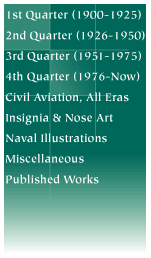
The Aircraft of the Royal Aircraft Factory
By Bob Pearson
The aircraft produced by the R.A.F at Farnborough remain as some of the most misunderstood of WW1. Unjustly criticized for features that were designed under the assumption that stability was the answer, the BE series were kept in service well past the date they were obsolete - for that the 'powers that be' should be blamed, but not the RAF BE2 itself, it did what it was designed to do.
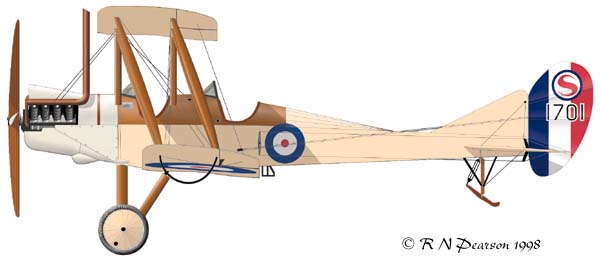
RAF BE2c 1701 "Victoria Hong Kong No.2"
No.4 Sqn RFC
Allonville aerodrome
Late 1915
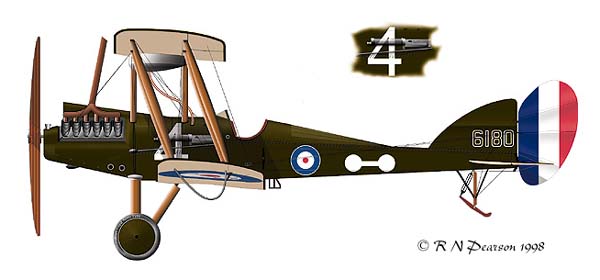
RAF BE12 6180
Lt R Watts
No.19 Sqn RFC
October 1916
The BE12 was a single seat modification of the ubiquitous BE2c, however it shared the BE2's inherent stability and wasn't a success in the fighter role. Note how the flight number '4' is pinted over the Vickers gun. Watts was shot down adn taken POW on 16 October 1916.
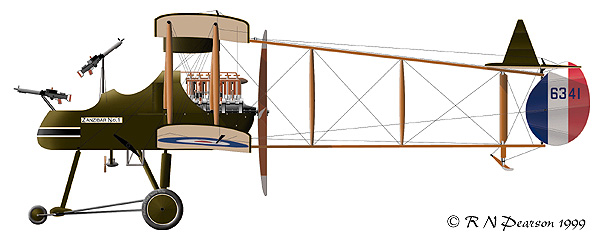
RAF FE2b 6341 "Zanzibar No.1" aka "the Scotch Express"
Captain D Grinnel-Milne/Corporal D MacMaster
No.25 Sqn RFC
May 1916
The next most significant design from Farnborough was the FE2 series of pusher. With no means of safely firing through the propellor arc on tractors, pushers were one solution to this problem. The FE2 was eventually used in many roles including: fighter, reconnaissance and bombing. The FEs of No.20 Sqn were particularily successful in the fighter role and many successes were claimed. The FE was kept in operational use up to the end of the war in the night-bombing role with No.100 Sqn RAF.
On 16 May 1916, Grinnel-Milne and MacMaster were forced down by Ltn Gontermann of Jasta 5. 6341 was then extensively photographed in German hands.
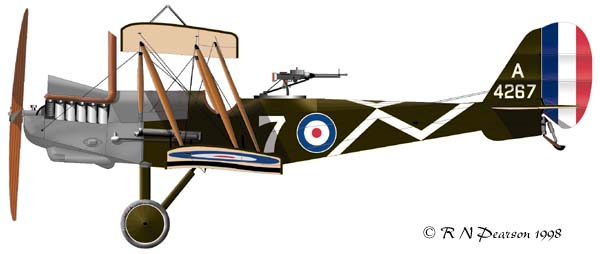
RAF RE8 A4267
No. 52 Sqn RFC
Designed as a replacement for the BE2, the RE8 would serve until the end of the war wherever the RFC/RAF could be found.
No.52 was the first unit to use the RE8 in France, however after heavy losses they exchanged their surviving RE8s with No.34 Sqn for the latter's BE2e aircraft. It would appear that as well as changing aircraft, they also acquired the zig-zag marking from No.34 as seen here on A4267 after No.52 re-equipped with the RE8 in 1917.
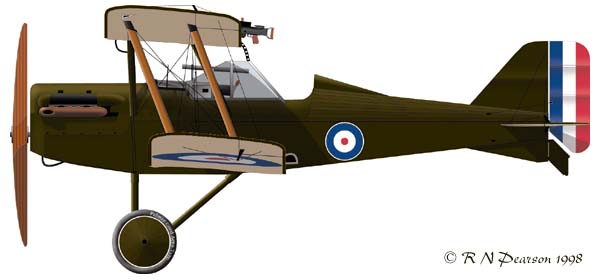
RAF SE5 'Greenhouse'
In early 1917 a new fighter took to the skies over Farnborough . . this was to win fame as the SE5/5a. The first British fighter to be armed with two guns (a vickers and a LEwis), the SE5 also used the remarkable Hispano-Suiza engine. One detail that was not to the pilot's liking was the fitting of a 'greenhouse' canopy over the forward cockpit and this was removed shortly after arriving in France, but prior to operational service. At present I have no markings on this profile, but will shortly add some for No.56 Sqn while based at London Colney prior to leaving for France.
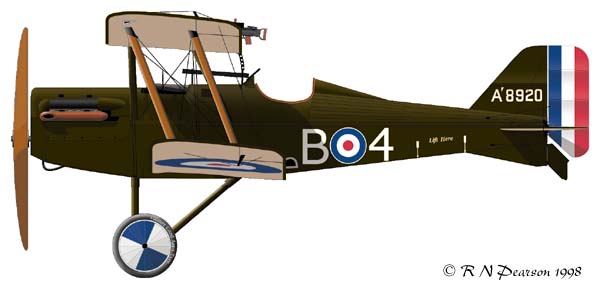
RAF SE5 A8920
Lt TM Dickinson
B Flight
No.56 Sqn RFC
June 1917
The most apparent change made to operational SE5s was the removal of the greenhouse. Other detail changes were also done, but we need not concern ourselves with them.
On 4 June 1917, Dickinson was shot down and taken POW.
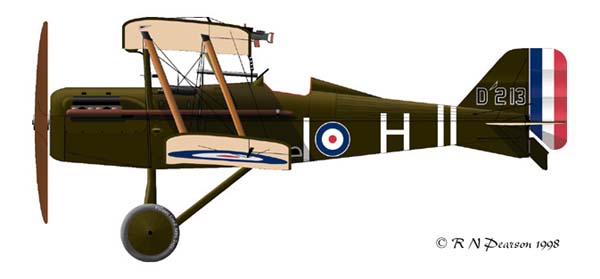
RAF SE5a D213
2/Lt PD Learoyd
No.40 Sqn RFC
Bruay Dunes Aerodrome
Spring 1918
With the basic SE5 proving itself a success, modifications were begun to improve the design. This involved installing a direct drive 200hp Hispano-Suiza in place of the original 150hp Hisso. Additionally the wingtips were squared off, losing their previously sharp rake.
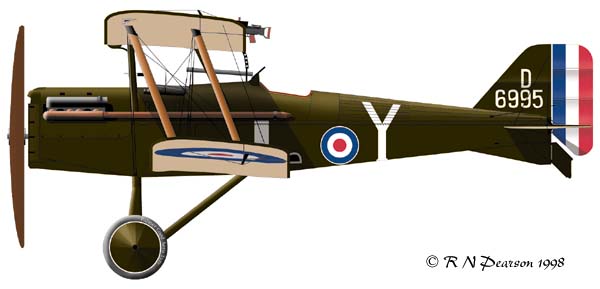
RAF SE5a D6995
Ltn Frank Alberry
C Flight
No.2 Sqn AFC
September 1918
The final variant of the SE5 to see use was the Wolseley Viper powered SE5a. The Viper was a geared copy of the Hispano-Suiza and seems to have been used in large numbers. The basic differences can be noted in the lower thrust line of the Viper powered aircraft.